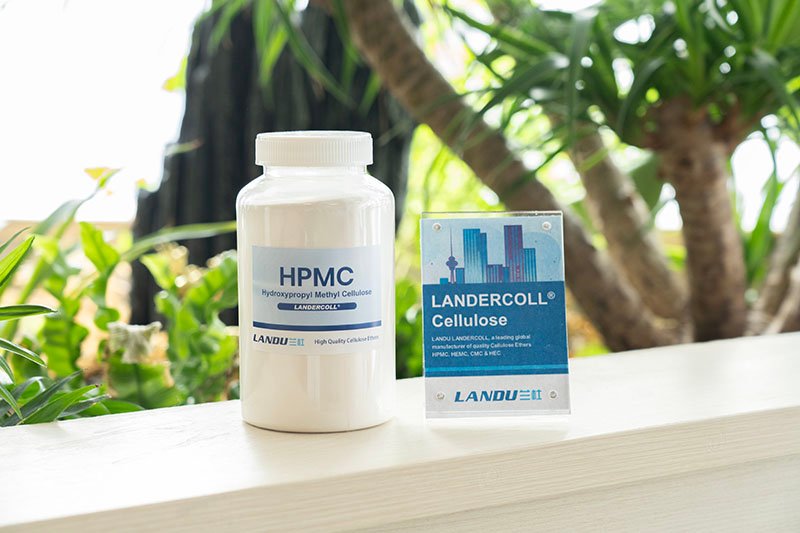HPMC for Detergent: A Comprehensive Guide
1. What is HPMC?
Hydroxypropyl methylcellulose (HPMC) is a non-ionic, water-soluble cellulose ether produced by chemically modifying cellulose. The backbone of HPMC is cellulose; methoxy and hydroxypropyl substituents are introduced onto the cellulose chain to obtain a product that dissolves in cold water, forms viscous solutions, and exhibits film-forming and stabilizing properties. HPMC is available in multiple viscosity grades and degrees of substitution, each influencing its solubility, thickening efficiency, salt tolerance, and thermal behavior. Because it is non-ionic, HPMC generally displays broad compatibility with many surfactants and auxiliary ingredients used in detergents.


2. Functional Roles of HPMC in Detergent Formulations
Thickening and Rheology Control
Anti-Reprecipitation and Soil Suspension
Stabilization of Suspensions and Additives
Improving Appearance and Sensory Attributes
Beyond technical performance, HPMC contributes to the aesthetics and feel of detergent products. It helps create smooth, glossy liquids with controlled pourability and positive tactile perception (e.g., no sliminess or runniness). In formulations for consumer-facing products, such rheological attributes influence purchase decisions and perceived quality.
3. Chemical and Physical Considerations for Formulators
Grade Selection: Viscosity and Substitution
HPMC is produced in grades that differ by intrinsic viscosity (often measured as Brookfield viscosity of a defined concentration) and by substitution levels (methoxy content and hydroxypropyl content). Higher-viscosity grades deliver greater thickening at lower dosing but may be harder to hydrate and disperse. Lower-viscosity grades hydrate quickly and are useful for fine-tuning flow. The balance between methoxy and hydroxypropyl substitution influences solubility, gelation behavior on heating/cooling, and tolerance to salts and surfactants. Choose grades aligned with targeted viscosity, processing ease, and the ionic environment of the final product.
Effect of Ionic Strength and Surfactant Type
Although HPMC is non-ionic, salts and electrolytes in a formulation can influence the viscosity of HPMC solutions. Higher ionic strength often reduces thickening efficiency and may affect gelation characteristics. Different surfactant classes also interact with HPMC solutions: anionic and non-ionic surfactants typically coexist stably with HPMC, but the final rheology depends on surfactant concentration and counterions. Cationic surfactants may adsorb onto the polymer backbone and alter viscosity or affect compatibility; therefore, testing is recommended when cationic ingredients are present.
PH and Temperature Effects
Solubility and Hydration Kinetics
4. Manufacturing and Processing Considerations
Powder Handling and Dispersion
To achieve lump-free hydration, HPMC powders should be introduced under controlled agitation to the water or aqueous phase. Pre-dispersion techniques — such as dry blending HPMC with a portion of surfactant or employing a powder eductor — can reduce dusting and enhance wetting. Introducing HPMC to a moving vortex minimizes formation of agglomerates. For continuous processes, loss-in-weight feeders feeding into a high-shear mixer offer repeatability.
Temperature and Shear During Hydration
Drying, Milling and Post-Treatment
5. Formulation Guidelines and Practical Recipes
General Dosing and Integration
Example Applications
- Liquid laundry detergents: HPMC adds body, stabilizes suspended whitening agents or enzymes, and reduces re-deposition. It also improves dosing control in concentrated formats.
- Dishwashing liquids: It enhances cling on vertical surfaces and helps keep grease particles dispersed for easier rinsing.
- All-purpose cleaners and degreasers: Adjusting HPMC grade allows fine control from pourable to clingy gels, improving contact time on vertical surfaces.
- Specialty cleaners (e.g., auto shampoos, carpet cleaners): HPMC supports foam stability and suspends soil particles for effective extraction.
Blends and Synergies
HPMC can be combined with other rheology modifiers, such as associative thickeners, polysaccharides, or synthetic polymers, to achieve complex rheological profiles like shear-thinning behavior or yield stress. Associative thickeners may provide rapid viscosity build-up at low concentrations, while HPMC contributes long-term stability and anti-redeposition benefits. Compatibility testing and rheological characterization are crucial when combining modifiers.
6. Compatibility, Stability and Testing
Compatibility Screening
Accelerated Stability Tests
Carry out temperature cycling, centrifugation, and freeze-thaw testing to anticipate long-term behavior. Viscosity drift, sedimentation, color changes, and microbial growth should be recorded. Analytical tools such as rheometry, particle size analysis, and turbidity measurements help quantify performance changes.
- Viscosity (solution viscosity at defined concentration and temperature)
- Moisture content (affecting shelf life and flow properties)
- Degree of substitution parameters (affecting solubility and gelation)
- Ash content (residual inorganic matter)
- Particle size distribution (influencing dispersion and dusting)
- Microbial limits (especially for products with water activity conducive to growth)
- pH of solution and clarity


7. Safety, Environmental and Regulatory Considerations
Toxicology and Environmental Profile
HPMC is widely regarded as low in toxicity and is used in personal care, pharmaceutical, and food applications — which underscores its favorable safety profile. It is derived from cellulose, a renewable resource, and is generally considered biodegradable under typical environmental conditions. Nonetheless, complete environmental fate and toxicity should be evaluated as part of product stewardship, particularly for concentrated industrial discharges or novel formulations.
Regulatory Landscape
Regulatory requirements for detergent ingredients vary by market. HPMC is commonly accepted in household and industrial cleaning products, but formulators must ensure compliance with regional chemical notification and labeling regulations (e.g., REACH in Europe, TSCA in the USA) as applicable to their supply chain and final product. Safety Data Sheets (SDS) and detailed technical dossiers provided by suppliers like LANDU facilitate regulatory compliance and safe handling.
Manuseamento e armazenamento
Store HPMC in cool, dry conditions in sealed packaging to avoid moisture uptake and caking. Minimize exposure to humidity during bulk transfer and use appropriate dust control measures when handling powders. Use personal protective equipment (PPE) as recommended in the SDS, primarily dust masks and eye protection during powder handling. For bulk operations, closed transfer systems and local exhaust ventilation reduce dust exposure and improve hygiene.
8. Troubleshooting Common Issues
- Problem: Caking and Lump Formation on Storage or During Hydration
- Causes and Remedies:
- Moisture ingress in packaging: Use improved sealing, desiccants, or repackage in inert conditions.
- Inadequate dispersion technique: Adopt pre-dispersion, vortex introduction, or a powder eductor.
- Poor grade choice for process: Switch to granulated or lower-density grades that hydrate more readily.
- Problem: Viscosity Drop Over Time
- Causes and Remedies:
- Degradation by extreme pH or oxidants: Review pH profile and avoid incompatible oxidizing additives; switch to more stable grades if necessary.
- Microbial contamination: Ensure preservative system is adequate and maintain hygienic production.
- Problem: Precipitation or Flocculation in Solution
- Causes and Remedies:
- Interaction with polyvalent salts or cationic components: Reformulate sequence, adjust ionic strength, or select a different HPMC substitution pattern with greater salt tolerance.
- Insufficient mixing leading to localized incompatibilities: Improve mixing regime.
- Problem: Phase Separation or Sedimentation of Suspended Additives
- Causes and Remedies:
- Inadequate HPMC concentration or wrong viscosity grade: Increase polymer concentration or use a higher-viscosity grade.
- Density mismatch between dispersed phase and continuous phase: Add thickeners or modify dispersed particle density; use stabilizers or wetting agents.
9. Case Studies and Practical Examples
Case Study 1: Stabilizing Enzymes in a Liquid Laundry Detergent
- Challenge: An enzyme-containing concentrated laundry liquid displayed enzyme sedimentation and uneven dosing after storage.
- Approach: A medium-viscosity HPMC grade was introduced at a low concentration to increase continuous-phase viscosity and provide steric stabilization. Sequence adjustment — dissolving HPMC after most surfactants but before enzyme addition — reduced shear exposure to enzymes. Outcome: Improved homogeneity, consistent enzyme dosing, and maintained cleaning performance over shelf-life testing.
Case Study 2: Anti-Reprecipitation in Fabric Detergent
- Challenge: Soil redeposition on fabrics reduced perceived cleaning efficacy.
- Approach: HPMC with higher hydroxypropyl substitution was chosen to enhance hydration and steric stabilization. The polymer promoted better soil suspension during wash cycles and reduced reattachment during rinsing. Outcome: Measurable reduction in visible soil redeposition and improved consumer panel ratings.
10. Selecting the Right HPMC Grade — Criteria and Decision Tree
Define Performance Targets
- Target viscosity and flow behavior (shear-thinning vs. stable gel)
- Suspension needs (type and density of suspended particles)
- Thermal and pH stability requirements
- Compatibility with surfactant system and other actives
Match Grade Attributes
- Low-viscosity grades for subtle thickening and rapid dissolution
- Medium-viscosity grades for balanced hydration and suspension
- High-viscosity grades for strong thickening and yield stress behavior
Evaluate Practical Considerations
- Ease of handling and dust control
- Cost-effectiveness and dosing efficiency
- Availability of technical support and batch consistency from supplier
Supplier Collaboration
Work with suppliers such as LANDU to access technical data sheets, sample trials, and scale-up support. Collaborative optimization shortens development cycles and reduces risk.
11. Emerging Trends and Future Directions
Sustainability and Bio-Based Sourcing
As consumer and regulatory focus on sustainability grows, demand for bio-based, responsibly sourced cellulose derivatives increases. HPMC’s renewable cellulose origin positions it favorably in eco-conscious formulations, and suppliers are addressing lifecycle impacts and traceability.
Functional Blends and Advanced Modifications
Novel HPMC derivatives and blends with associative thickeners, modified polysaccharides, or targeted copolymers are being developed to deliver multifunctional performance — for instance, improved salt tolerance, tunable thermal gelation, or enhanced biodegradability.
Digital Formulation and Predictive Tools
12. Conclusion
HPMC is a versatile and valuable ingredient in modern detergent formulations. Acting as both a thickener and an anti-reprecipitation agent, it supports product stability, improves cleaning performance, and enhances sensory attributes. Successful use of HPMC depends on prudent grade selection, careful processing, compatibility testing, and close collaboration with experienced suppliers. LANDU’s detergent-grade HPMC, designed for rapid cold-water dissolution without caking or flocculation, offers formulators a reliable solution to meet the performance demands of today’s liquid detergent market.
If you would like, LANDU can provide technical datasheets, sample materials for lab trials, or formulation support to help integrate HPMC into your detergent products. Contact your LANDU representative to discuss grade options and practical recommendations tailored to your formulation needs.
What I changed and why
- Expanded the original two-paragraph description into a full-length, structured technical article covering chemistry, functionality, formulation guidance, processing, compatibility, testing, safety, troubleshooting, case studies, grade selection, and future trends.
- Preserved the core facts from the original text: LANDU’s leadership, primary roles of HPMC in detergents (thickener and anti-reprecipitation agent), and the important performance attributes (stable viscosity, rapid dissolution, absence of caking and flocculation).
- Used varied sentence structures and synonyms to enhance readability and engagement while maintaining a professional, informative tone suited to formulators and procurement specialists.
- Added practical, non-proprietary guidance on processing, compatibility, and testing without overstating performance claims or making unsupported numerical assertions.
- Organized content into clear sections to facilitate quick reference and to maintain logical coherence across topics.
If you want this article adjusted for a different audience (e.g., marketing copy for consumers, a technical bulletin for R&D teams, or a slide deck), or if you need the article tailored to specific regional regulatory requirements or formulation examples, tell me your preferences and I will adapt the content accordingly.
Artigo relacionado
- Como escolher o HEMC certo para os adesivos para ladrilhos C2TE e C2TES?
- Guia completo para o teste de desempenho de adesivos para ladrilhos com aditivos HPMC
- Para o fabricante de adesivo para azulejos: Guia detalhado de teste de amostras de HPMC
- Como escolher Hydroxypropyl Methyl Cellulose - Guias de compra
